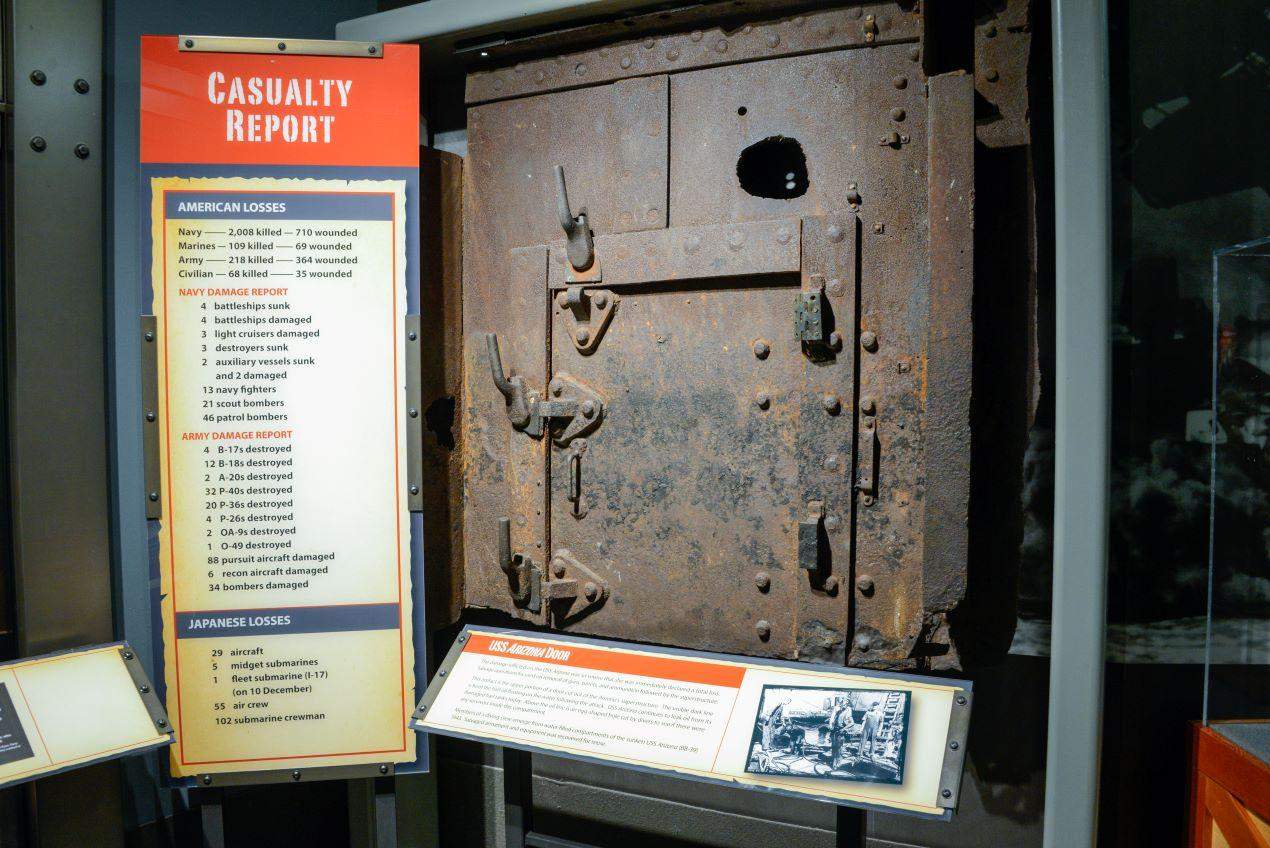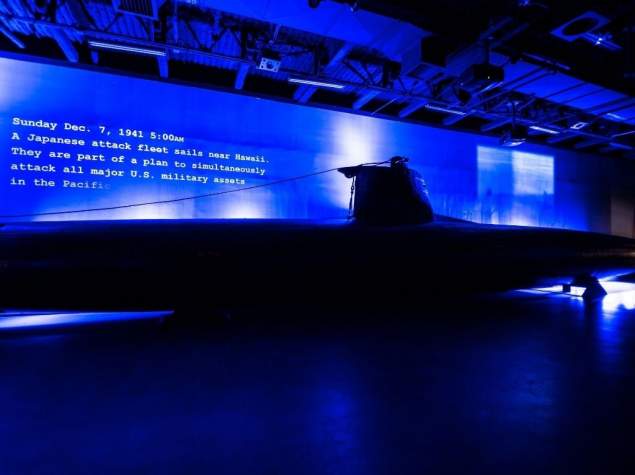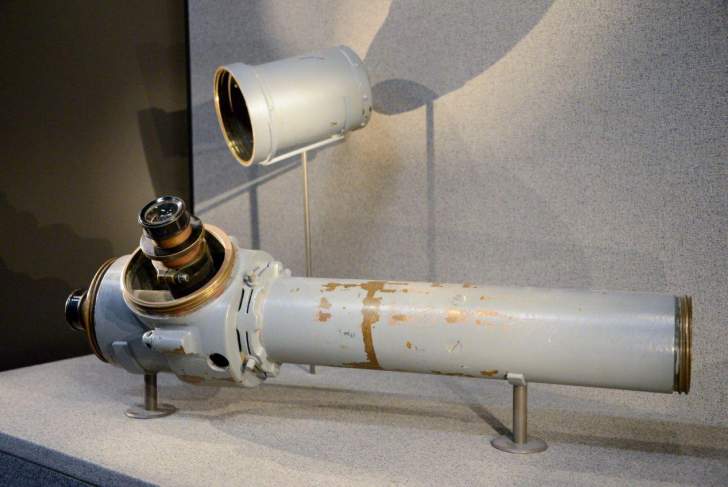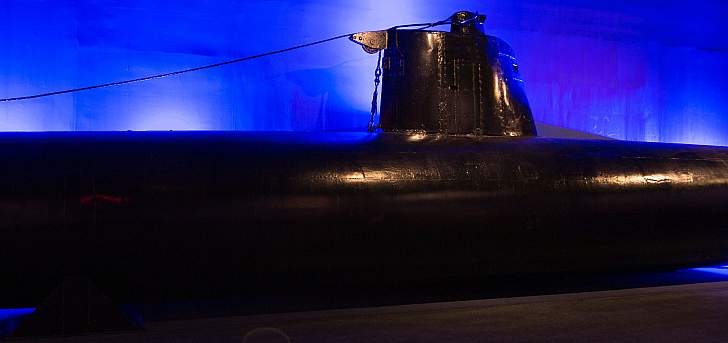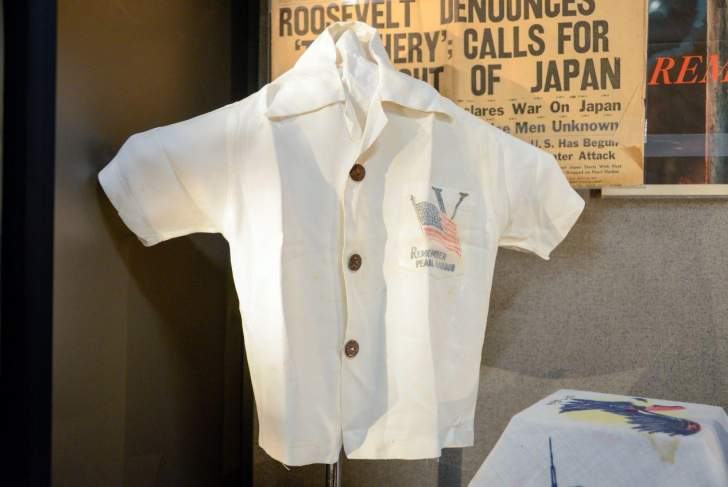This artifact is the upper portion of a door cut out of the USS Arizona’s superstructure. The visible dark line is from the fuel oil floating on the water following the attack on Pearl Harbor. Above the oil line is an egg-shaped hole cut by divers to see if there were any survivors inside this compartment after the attack. The ship model pictured above, also an item from the collections of the National Museum of the Pacific War, is a model of the Arizona and depicts the placement of this hatch on the ship's structure. The damage inflicted on the USS Arizona was so severe that she was immediately declared a total loss. Salvage operations focused on removal of guns, turrets, and ammunition followed by the superstructure. The USS Arizona continues to leak oil from its damaged fuel tanks today.
The Salvage: USS Arizona Hatch
This section examines the salvage and repair operations after Pearl Harbor, featuring an artifact salvaged from the USS Arizona after the attack.
Overview
In less than two hours, the Japanese destroyed or damaged all eight battleships and hundreds of aircraft. Thousands of people, military and civilian, were killed or wounded. Luckily, the American aircraft carriers had been ordered out to sea and avoided the bombings. Instead of launching a third wave to bomb ship repair facilities and oil and fuel reserves, the Japanese retreated to avoid a counterattack. This allowed America to repair what was left of their fleet and begin salvage operations.

Divers emerging from a gas-filled compartment aboard one of the ships undergoing salvage, after the 7 December 1941 Japanese raid. Official U.S. Navy Photograph, from the collections of the Naval History and Heritage Command.
Rescue crews searched damaged and sunken ships for survivors, while divers and salvage teams worked to clear the wreckage. Capsized vessels were righted when possible, and repairs started on the ones that could be saved. Crews worked around the clock to pump water, clear compartments, and do everything they could to revive the bombed and battered fleet. Much of the work required the crew to wear gas masks due to the risk of toxic gas from the oil off the sunken ships.
Of the eight battleships, only the Arizona and the Oklahoma were beyond repair, while the other six were quickly returned to service and joined in the Pacific War.
USS Arizona Hatch
Exhibit Preview
Pearl Harbor Exhibit
This exhibit tells the story of the attack on Pearl Harbor and how it brought our nation into the war.

